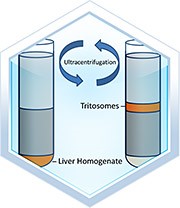Recombinant Histone proteins are popular research solutions in Drug discovery and Epigenetics studies. They can be used as in vitro positive controls in the analysis of post-translational Histone modifications, as substrates for Histone modification enzymes and chromatin studies.
Unlabeled and biotinylated Histone substrates are already commercially available to perform these assays. For example, BPS Biosciences provides all five individual, full length, recombinant histone proteins (H1, H2a, H2b, H3, and H4) as well as histone H3/H4 tetramer and full histone octamers. Expressed in E. coli expression system, they are ideal for researchers looking for Histone Methyltransferase (HMT) and Histone Acetyltransferase (HAT) assays.
Modified Histone recombinant protein substrates
Getting post-translationally modified Histones is a bit more tricky; sources are rare and reliable characterization is difficult.
New recombinant modified Histone proteins and complexes (octamers and tetramers) have recently been commercially released (eg. important epigenetic lysine targets such as H3K27, H3K9, H3K4, and H4K20 to name but a few). These recombinant Histone proteins come with methylation site-specific modifications, including mono-, di-, and tri-methylated individual lysine residues. They are perfect for use as site-specific substrates for Histone Demethylase (HDMT) and HMT assays in Drug Discovery applications.
These methylated Histones can also be used as research tools to screen antibodies, enzymes and proteins for cross-reactivity or binding interactions with specific histone modifications.
A focus on H3K27 for drug discovery applications
A first group methylated Histone proteins by BPS involved methylation at the Lysine 27 site of Histone H3 (H3K27). Recent studies have shown an aberrant methylation profile of H3K27 in various cancers, making H3K27 a key druggable target. The new H3K27 site is tri- methylated by the HMTs (EZH2, or by NSD2/3). Alternately, H3K27 can be demethylated by specific HMDTs like UTX (KDM6A) and JMJD3 (KDM6B).
If your focus is on another modified Histone substrate or if you are looking for specific HATs, HMTs or HDMTs, you might be interested in contacting experts who can help you design your Histone-based assays.
What about you?
Do you think the substrates and enzymes cited here are useful for your programs in Epigenetics and drug discovery? Looking for other substrates or small molecules?
Looking forward to your insight and feedback in the comments below!



